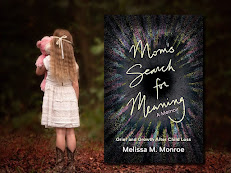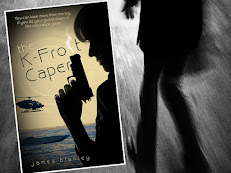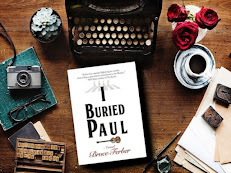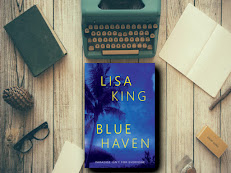 A number of people have asked me what was behind The Story of Camp Sobingo – the “real” story. I have no ready answer. I was only an 8-9 year old kid in 1946 in that military compound so far away from the country of my birth. It was while I was writing Once a Brat, about my experiences as an army brat accompanying my army officer father all over the world in the days following the end of WWII, that the image of my mother telling me that one of the women in the compound had died, sprang into my mind. And not only had she died, she chose to end her life there. I often wondered why a woman would destroy herself, what kind of dark forces in her childhood would convince a person that death was the only way out of the terrible pain?
A number of people have asked me what was behind The Story of Camp Sobingo – the “real” story. I have no ready answer. I was only an 8-9 year old kid in 1946 in that military compound so far away from the country of my birth. It was while I was writing Once a Brat, about my experiences as an army brat accompanying my army officer father all over the world in the days following the end of WWII, that the image of my mother telling me that one of the women in the compound had died, sprang into my mind. And not only had she died, she chose to end her life there. I often wondered why a woman would destroy herself, what kind of dark forces in her childhood would convince a person that death was the only way out of the terrible pain?So, being the incurable writer (story-teller that I am, I made it all up.
The four women in the story are composites of women I have known throughout the years, some stories are true, others appear quite by accident as I sat at my keyboard and allowed the characters free reign to do as they pleased. And often the results were a complete surprise to me. I began wondering why the beautiful Leah Damon would want to kill herself, and imagined a troubled childhood, a feeling of being “different” from the others in school (no doubt a mirror image to my own childhood where I was always the new kid in class, and do girls here wear Peter Pan collars or sweaters?)
My mother is portrayed most nearly true to form. She is the West Texas farm girl who marries a soldier and becomes an army wife, following him to the literal ends of the earth.
Maggie is probably my alter-ego, if I would let it out to play. She is a brassy, bossy, fun-loving woman who takes all the challenges life throws at her and almost literally spits in fortune’s eye.
And Trudy. Ah, yes, Trudy is the shy girl who marries into wealth and power and yet she follows her husband to make a home for themselves in a distant country, where she can be herself instead of one of the Cavanaugh Women of fame and fortune. Years later, she finds her own hidden strength, and a weakness that led her to believe events that were not true.
Perhaps the following will describe more in detail the process I undertook getting this story from my imagination to the publisher’s website.
A Note to the Reader
There really was/is a Camp Sobingo, located outside the capitol city of Seoul, South Korea at the end of WWII. This military compound’s cookie-cutter “quarters” was home to the women and children who joined their Army officer husbands during the US Occupation. The camp had a school, a post exchange, a dispensary, a commissary, and even a movie theatre (think “MASH”). Ever-present, however, was the military presence, both Korean and our own US forces, and the tyranny of the Russians located across the 38th parallel, who merely annoyed the dependents with their random denial of electricity to the American contingent.
Most of the Americans had deployed to other assignments before June 25th, 1950 when North Korea invaded South Korea. Those remaining escaped safely, but “The Land of the Morning Calm” would never be the same. In 1954, my father was ordered back to Korea as part of the Military Advisory Group. He took a short drive to what remained of Camp Sobingo, and sent snapshots of our former quarters, (Hq.G-27) which had been pock-marked by aerial strafing, and natives were stripping the floorboards for fuel.
The window, where I had sat and dreamed a 9 year old’s dreams and played with my homemade doll-house populated by models cut from the Sears, Roebuck catalog, was boarded up. More pockmarks surrounded the framework.
An unusual childhood, one might correctly assume, yet I was not alone in this kind of adventure. There are vast numbers of military brats and wives of servicemen who carry the same experiences from different countries. Thanks to the power of the Internet, we are finding each other. Two such sites that assist in this process are:
www.military-brats.com where you may register so that others may find you, and www. Overseas-Brats.com. Another organization of interest is the American Overseas Schools Historical Society, which recently broke ground for a museum to be built in Wichita, Kansas, housing such “sacred artifacts” as my 4th grade report card from Seoul Dependents Elementary School. Many of the schools currently in operation overseas are being closed as our military presence is no longer required.
Researchers and historians will be astounded by such a treasure trove detailing one small but important part of our nation’s history.
Marilyn Celeste Morris
Author of THE WOMEN OF CAMP SOBINGO





































































































































































No comments:
Post a Comment